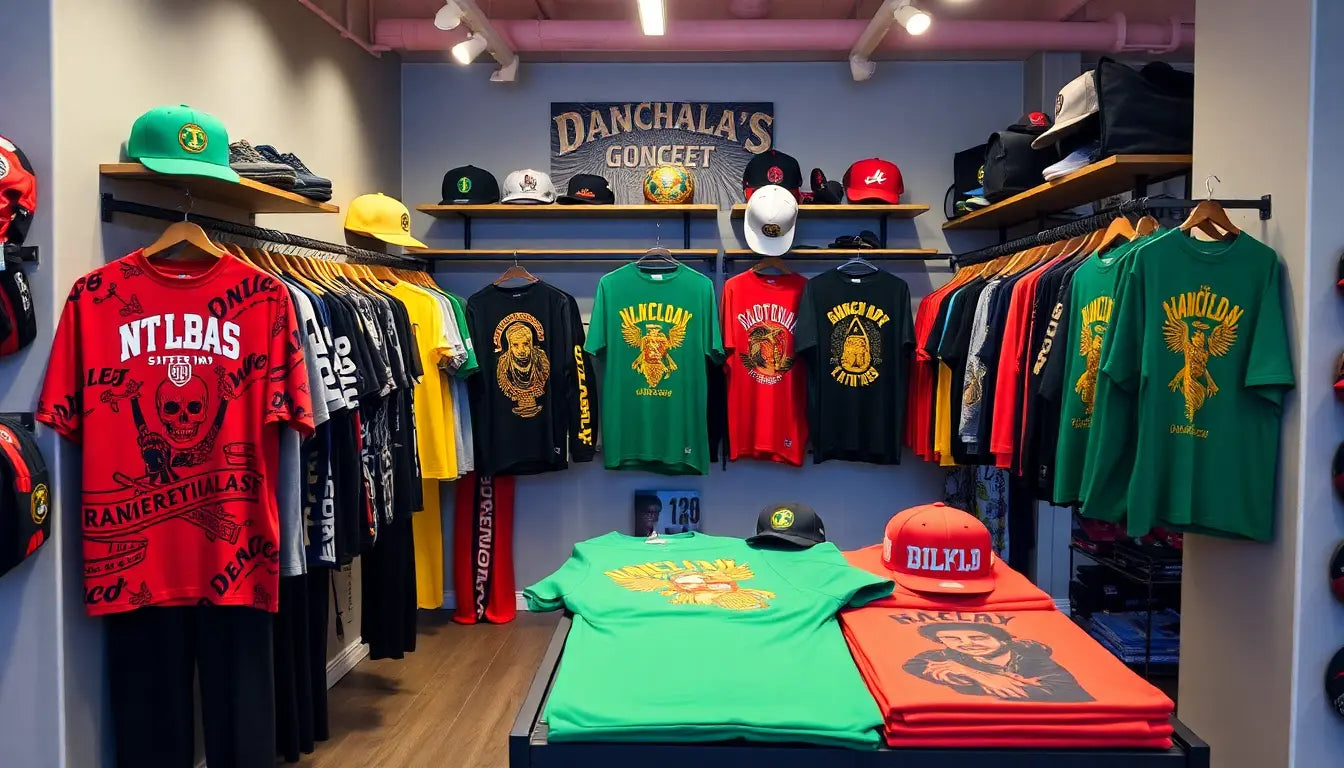
Behind the Tech: The E-Commerce Stack That Scaled Tommy Lee Sparta's Dancehall Streetwear Globally
Introduction: When Culture Meets Commerce
In 2025, artist-driven fashion is not just merch — it is a cultural product that must be engineered, marketed, and delivered with the same rigor as a tech startup. Tommy Lee Sparta's dancehall streetwear illustrates how a niche, music-rooted brand can find a global audience when the product, timing, and technology align. This long-form guide pulls back the curtain on the e-commerce stack, operations, and growth playbook required to scale a dancehall streetwear label from local legend to international brand.
Why the E-Commerce Stack Determines Brand Velocity
- Speed: Fans expect fast pages and frictionless checkout on mobile during drop windows.
- Reliability: High-traffic releases can crash weak stacks, damaging credibility and revenue.
- Localization: Converting global fans requires localized payments, currencies, shipping, and language.
- Data: Measuring funnels, cohorts, and LTV is essential to turn viral moments into sustainable growth.
Understanding the Dancehall Streetwear Audience
A stack that scales must be built around user personas and behaviors. For a dancehall streetwear brand consider these primary audiences:
- Local Superfans: Jamaica and Caribbean diaspora — high engagement, purchase intent, prefer local payment rails and remittance-friendly shipping.
- Global Streetwear Collectors: UK, US, Europe — value limited drops, authenticity, and provenance; often buy multiple SKUs and pay for fast shipping.
- Casual Fans & Tour Merch Buyers: Festival and concert purchasers who buy on impulse; need fast checkout and clear sizing guidance.
- Influencers & Retail Partners: Require wholesale portals, lookbooks, digital assets, and dropship or B2B ordering flows.
Core Architectural Principles — The North Star
- Headless & composable: Separate presentation from commerce logic so marketing can iterate rapidly.
- Edge-first delivery: Serve assets from the nearest PoP to minimize latency across continents.
- API-driven workflows: Make catalog, cart, checkout, fulfillment, and analytics modular and auditable.
- Progressive enhancement: Fast initial render with JS for interactive features; ensure SEO-critical content is server-rendered.
- Resilience and graceful degradation: Provide queues, rate-limiting, and a maintenance plan during peak loads.
Comprehensive Stack Recommendation With Rationale
This section outlines a practical, battle-tested stack balancing speed, cost, and global reliability.
Frontend & Delivery
- Framework: Next.js (App Router) or Remix for server-side rendering, image optimization, and incremental static regeneration. Benefits: SEO, performance, and developer experience.
- Edge Hosting: Vercel or Cloudflare Pages with Workers. Benefits: global edge rendering, lower TTFB, instant cache invalidation for drops.
- Media & CDN: Cloudinary or Imgix for responsive imagery and automatic format conversion (WebP/AVIF) plus a global CDN to host static assets and video snippets.
- Font delivery: Use variable fonts and host via the same CDN to avoid layout shifts. Preload critical fonts for FCP improvements.
Commerce Engine & Backend
- Commerce Platform: Shopify Plus for fastest time-to-market and native plugins, or a headless alternative (Saleor, Medusa, Commerce Layer) if you require custom checkout or multi-national tax logic.
- Product Information Management (PIM): Akeneo (enterprise) or a lighter PIM built into the chosen commerce platform. Ensures consistent SKUs, localized descriptions, and variant rules.
- Headless CMS: Sanity, Contentful, or Strapi for editorial content, lookbooks, artist storytelling, and landing pages used for SEO and social traffic.
- Order Management (OMS): Shopify native OMS for single-warehouse brands; Brightpearl, SkuVault, or custom OMS for multi-warehouse operations and reserved inventory flows.
Payments, Fraud, and International Pricing
- Payment Gateways: Stripe + Stripe Connect for marketplace-like flows, Adyen for enterprise global coverage, and PayPal for fallback. Add local options like M-Pesa, Paystack, or Klarna depending on region.
- Currency & Pricing: Show localized prices based on IP or account preference, pre-calculate duties and taxes for DDP (Delivered Duty Paid) options to avoid surprise fees.
- Fraud Protection: Stripe Radar, Sift, or Signifyd to reduce chargebacks and automate rules for high-risk orders from new cards or unusual shipping addresses.
Fulfillment & Logistics Strategy
- Distributed Fulfillment: Stage inventory in at least two regions (Americas, EMEA/APAC) to lower shipping transit times and customs friction.
- 3PL Partners: ShipBob, Deliverr, or regional 3PLs that integrate via API for real-time inventory and returns processing.
- Returns & Exchanges: Offer local return hubs in major markets and clear return policies; consider using return labels and local reverse logistics to enhance trust.
- Inventory Accuracy: Use cycle counting, barcode-driven receiving, and FIFO/LIFO rules appropriate to SKUs (especially for limited editions).
Marketing, CRM & Growth Systems
- Email & SMS: Klaviyo for omnichannel flows tied to product activity; segment VIP fans, repeat buyers, and cart abandoners.
- Social Commerce Integrations: Instagram Shops, TikTok Shopping, and buy-on-platform experiences that link back to the canonical store for fulfillment.
- Customer Support: Gorgias or Zendesk integrated into commerce to surface order data in support tickets and social DMs.
- Affiliate & Influencer Tracking: Use dedicated platforms (Refersion, PartnerStack) and strict UTM conventions to attribute launch performance.
Data, Analytics & Experimentation
- Event Tracking: Implement a server-side and client-side event pipeline using GA4 for baseline web analytics and a product analytics tool like Amplitude or Mixpanel for funnel analysis and cohorts.
- Data Warehouse: Centralize events, orders, ad spend, and customer data in BigQuery or Snowflake for analysis and ML-driven LTV modeling.
- BI & Dashboards: Looker, Metabase, or Superset for real-time dashboards; create views for drop performance, SKU sell-through, and regional conversion rates.
- A/B Testing & Feature Flags: Optimizely or LaunchDarkly to test product page layouts, checkout flows, and promotional messaging during low-risk windows before major drops.
Observability, Monitoring & Incident Response
- Monitoring: Sentry for frontend error monitoring; Datadog or New Relic for backend and infrastructure metrics.
- Uptime & Synthetic Tests: Pingdom or Datadog synthetics to monitor checkout paths and APIs from key regions.
- Runbooks: Pre-defined incident response playbooks for payment failures, checkout slowdowns, and inventory oversells; include rollback paths and communication templates.
Security, Compliance & IP Protection
- PCI Compliance: Use hosted checkout widgets or payment providers to limit PCI scope. Maintain strict access controls for admin interfaces.
- DDOS & WAF: Cloudflare, AWS Shield, or Akamai for attack protection on launch days.
- IP & Brand Protections: Monitor marketplaces and social platforms for counterfeit products and abuse. Use takedown processes and legal counsel when necessary.
- Privacy: GDPR and CCPA compliance via localized consent flows and Data Processing Agreements with vendors.
SEO Strategy Specific to Dancehall Streetwear
SEO is a long-term moat for organic discovery. For a Tommy Lee Sparta–style brand, marry music and product content to surface in search results.
- Keyword Strategy: Target a mix of high-intent product queries ("Tommy Lee Sparta hoodie", "dancehall merch 2025"), long-tail niche queries ("dancehall streetwear limited edition UK"), and cultural queries that link music content to apparel ("Tommy Lee Sparta tour merch [city]").
- Content Types: Product pages, artist lookbooks, behind-the-scenes blog posts, editorial interviews, and tour-specific landing pages that capture local search demand.
- Technical SEO: Server-rendered content for critical pages, correct canonical tags, XML sitemaps, hreflang for localization, and structured data (Product, Offer, Breadcrumb) to enable rich snippets.
- Link Building: Partnerships with music blogs, urban fashion sites, and niche streetwear forums. Prioritize editorial storytelling over spammy directory links.
- Core Web Vitals: Aim for LCP < 2.5s on mobile, CLS < 0.1, and FID < 100ms to preserve rankings and conversion rates.
Detailed Drop-Day Playbook (Operational)
This is an expanded step-by-step checklist for launch day operations, designed to reduce risk and maximize revenue.
- Preparation (T-minus 7–14 days)
- Finalize SKU counts and stage inventory in target warehouses.
- Run a full load test mimicking expected concurrent users plus a safety buffer (1.5x–3x expected peak).
- Pre-render landing pages and warm CDN caches for critical assets.
- Review payment provider limits and set higher processing caps if needed.
- Coordinate influencer posts and email/SMS send times; stagger posts to avoid unnatural traffic bursts.
- Execution (Launch day)
- Open with a soft-launch window for VIPs (pre-sale), then open to the public to flatten initial peaks.
- Enable graceful queuing if traffic exceeds thresholds; communicate estimated wait times transparently.
- Monitor analytics dashboard and error logs in real time; have engineers on call for 0–4 hours post-launch.
- Keep social/community channels updated with live status messages if anything degrades.
- Post-Launch (T+24–72 hours)
- Analyze funnel metrics: sessions, product views, add-to-carts, checkouts, and drop-specific metrics like giveaway sign-ups.
- Audit fraud rates and flagged orders; review manual holds for high-value purchases.
- Run quick retrospectives to capture what went well and what failed; incorporate findings into the runbook.
Example Queue and Rate-Limit Design
For heavy drops, implement a queue and token-bucket rate limiting to protect backend services. Pseudo-flow:
1. User hits /drop landing page (cache-forwarded).
2. If release_time > now -> show pre-release page.
3. At release, enqueue user session with a ticket ID.
4. Serve session to storefront at a controlled rate (e.g., 200 reqs/s).
5. If user's session times out, return to queue with ETA.
6. Checkout posts are throttled and validated server-side to prevent oversell.Localization & Market Expansion Playbook
- Phase 1 — Home Market Optimization: Ensure flawless experience in Jamaica and top diaspora markets (UK, US, Canada) with localized checkout and shipping.
- Phase 2 — Regional Fulfillment: Stand up a 3PL in the EU/UK and one in the US to reduce delivery times and handling fees.
- Phase 3 — Emerging Market Integrations: Add local payment methods (M-Pesa, Paystack) and regional warehouses or dropship partners for Africa and LATAM.
- Phase 4 — Global Brand Partnerships: Wholesale partnerships with curated boutiques and music merch aggregators to increase offline discovery.
Team, Roles & Org Structure for Sustainable Scaling
Scaling globally requires cross-functional coordination. Typical core team for year 1–2:
- Head of E-commerce: Strategy, vendor selection, and P&L responsibility.
- Platform Engineer(s): Build and maintain headless storefront, integrations, and CI/CD pipelines.
- Product Manager: Roadmaps for checkout, mobile UX, and feature prioritization.
- Operations Manager: Inventory, 3PL management, and returns policy.
- Growth Marketer: SEO, paid media, partnerships, and influencer programs.
- Creative Lead: Product shoots, lookbooks, and content tied to musical releases.
- Customer Ops: Support, refunds, and community moderation.
Estimated Budget Ranges (Indicative)
- Lean Launch (Shopify + basic integrations): $3k–$10k/month + 1–2 full-time staff.
- Growth Mode (headless, multi-region, analytics): $15k–$40k/month + 3–6 full-time specialists and 3PL costs.
- Enterprise (global, multi-warehouse, bespoke OMS): $50k+/month with dedicated SRE, legal, and compliance teams.
KPIs, Dashboards & Sample SQL Queries
Trackable, actionable KPIs include conversion rate, AOV, LTV, fulfillment time, and returns. Example simplified SQL to compute drop-day conversion rate:
SELECT
COUNT(DISTINCT CASE WHEN event_name = 'order_placed' THEN user_id END) as orders,
COUNT(DISTINCT CASE WHEN event_name = 'product_view' THEN user_id END) as viewers,
(orders::float / NULLIF(viewers,0)) * 100 as conversion_rate
FROM events
WHERE event_date = '2025-09-01'
AND campaign = 'drop_fall_2025';Common Pitfalls and How to Avoid Them
- Underestimating traffic patterns: Run realistic load tests and simulate hotspots from influencer posts.
- Ignoring localization: High drop-off rates often come from payment and shipping friction in non-US markets.
- Poor asset optimization: Large hero images and unoptimized fonts destroy mobile LCP.
- Not instrumenting events end-to-end: Without reliable data, you cannot improve conversions or attribute channels accurately.
Hypothetical Case Narrative: A Successful Global Drop
Imagine a three-phase launch tied to a new single:
- Phase 0 — Tease: Short-form clips and behind-the-scenes content tease a limited collection; email capture incentivized with early access.
- Phase 1 — VIP Pre-sale: 24-hour window for newsletter and SMS subscribers; inventory reserved for VIPs and limited to 2 units per customer to spread stock.
- Phase 2 — Public Drop: Staggered influencer posts and regional launch times to maintain performance; queueing system engaged for high demand markets; analytics show UK conversion rate up 12% vs baseline, and EU shipping options increase AOV by 9% thanks to DDP pricing.
- Follow-up: Retargeting and post-drop content convert casual buyers into repeat customers with cross-sell offers and exclusive access to the next drop.
Legal, Licensing & IP Considerations
- Music & Branding Rights: Ensure proper licensing for any imagery or lyrics used on apparel.
- Trademark Protections: File trademarks for brand, logos, and signature marks in key markets to prevent counterfeits.
- Consumer Protection: Adhere to local consumer rights around returns, warranties, and shipping disclosures.
Advanced Tactics: Leveraging Music Data For Commerce
- Playlist-Driven Drops: Use streaming analytics to identify cities with spikes in listens and offer localized pop-up drops or targeted ads.
- Tour Commerce Integration: Enable geo-targeted merch landing pages per tour stop and reserve inventory for on-site pickup or fast local delivery.
- Fan Tokenization & Loyalty: Experiment with on-chain provenance (where legal) or centralized fan tokens to grant priority access and authenticate limited editions.
Measuring Long-Term Brand Health
Beyond immediate revenue, track retention, NPS, social sentiment, and the velocity of secondary market resale (if applicable). Brand health metrics will indicate whether tech and operations are turning transient hype into a durable community.
Checklist — Pre-Launch Technical Audit
- Performance: LCP < 2.5s mobile; audit images, fonts, and JS bundles.
- Checkout: Local payment methods enabled for top markets; test full flows end-to-end.
- Fulfillment: Inventory staged and connected to OMS; returns policy tested with 3PL partner.
- Monitoring: Synthetic and real-user monitoring in place across top geographies.
- Communications: Pre-crafted customer messages for delays, sold-out alerts, and shipping updates.
Conclusion: Building a Tech-First Culture-Driven Brand
Scaling a dancehall streetwear brand globally is a multi-dimensional challenge: it requires engineering for traffic and latency, operations for inventory and returns, legal diligence, and a marketing engine that connects music moments to product moments. The right composable stack — headless frontend, global edge delivery, API-first commerce, robust analytics, and distributed fulfillment — makes it possible to convert culture into a global business without sacrificing authenticity.
Next Steps & How to Use This Guide
- Run a 30-day audit against the pre-launch checklist and KPIs listed above.
- Choose a Minimal Viable Stack for the next drop (recommendation: Shopify Plus + Next.js + Vercel for speed).
- Plan a staged launch across territories with a 90-day roadmap for payments, fulfillment, and SEO content.
- Iterate: After each drop, complete a post-mortem and update the runbook so every subsequent release is smoother.
Want an actionable, customized plan for a specific budget or market mix? With the right technical and operational playbook, a music-led streetwear label like Tommy Lee Sparta's can turn cultural influence into an enduring global business.


